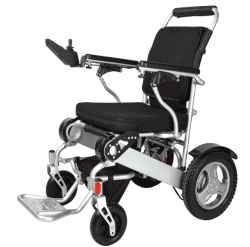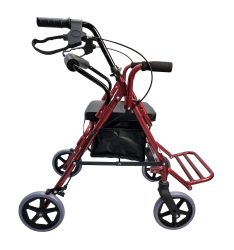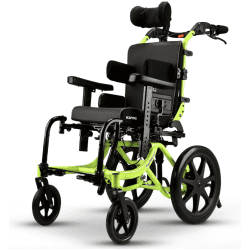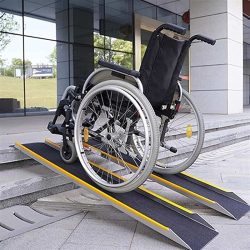Table of Contents
ToggleFor able-bodied individuals, there isn’t much thought given about wheelchairs. But for those who rely on wheelchairs for their mobility, this innovative assistive technology has given them another chance to autonomy of their own body. Due to the wheelchair’s important contribution to the disability community, we now celebrate International Wheelchair Day every March 1st.
International Wheelchair Day is a global event to celebrate and raise awareness about the importance of wheelchairs not only for those with mobility limitations but for enhancing mobility and fostering inclusivity.
Happy International Wheelchair Day, March 1st!
History
Founded in 2008 by blogger, Steve Wilkinson, also known as WheelchairSteve, the event was established to recognize the impact of wheelchairs on the lives of disabled community members and to shine a spotlight on their resilience and strength.
The establishment of this event might be relatively new, but it’s due time that we acknowledge the pivotal role that manual and electric wheelchairs play in providing mobility and independence to those people with disabilities.
The significance of wheelchairs in enhancing mobility
There are numerous ways wheelchairs improved the quality of lives of those with disabilities such as:
Independence and autonomy
Wheelchairs provide people with mobility issues the ability to move independently and perform daily tasks such as cleaning, cooking, and personal care. This gives them a sense of control in their daily lives and self-sufficiency.
Access to education and employment
Since they can move independently, wheelchair users can study and work, giving them equal opportunities to access education and sustain their daily expenses by having employment or source of income.
Social inclusion
Enhanced mobility because of an electric or manual wheelchair also allows people with disabilities to participate in social gatherings and other events, promoting a sense of belonging and community engagement.
Improved mental health
Leading a balanced life contributes to improved mental health. For people with disabilities, being able to live like other able-bodied individuals with the help of their wheelchairs significantly impacts the quality of their lives since they can participate, reducing feelings of isolation and feeling limited.
Advocacy and awareness
Wheelchairs serve as a symbol of disability rights and inclusivity. It is a global emblem recognized for advocating accessible spaces and raising awareness about the challenges faced by people with mobility impairments. Challenges that include:
- Discrimination and social stigma: Despite the active campaigning of organizations, thought leaders, mobility experts such as Gilani Mobility, and other influential people for accessibility and inclusion, people with disabilities still experience discrimination and are not able to experience equal opportunities.
- Accessibility in public spaces: Not all public spaces are designed for wheelchair users. When this happens, the individual with mobility impairment is left feeling excluded. They are physically barred from entering an establishment because they are in a wheelchair and no accessibility features are present to accommodate them.
- Inadequate accessibility housing: Accessible housing can be scarce and modifying existing homes to become accessible can be quite costly. Widening doorways, bathroom modifications, and installation of wheelchair ramps, chair or stair lifts, handrails and grab rails can total to an amount that not all people with disabilities will be able to afford.
- Limited recreational opportunities: Some recreational and leisure activities may not be designed to accommodate wheelchair users. This restricts their participation in certain events and activities and might turn them off from leading a more active and participative lifestyle.
- Emergency evacuation: During evacuation, wheelchair users are often given priority. Nevertheless, they still may face difficulties in evacuating quickly and safely due to the lack of accessible evacuation routes and facilities.
- Promoting inclusivity-year round
Promoting inclusivity must not only be during the global celebration of the importance of wheelchairs, it should be beyond commemorative days. To truly be inclusive all year round, strategies for creating inclusive environments must involve incorporating universal design principles, conducting accessibility audits, and asking wheelchair users for their feedback on what they need and what could be improved.
The responsibility to create inclusive environments for wheelchair users requires tangible efforts and evident changes such as:
- Governments must implement and enforce strict accessibility regulations to ensure public spaces, transportation and infrastructure are wheelchair-friendly.
- Organizations must prioritize inclusivity by hiring disabled workers and providing accessible workspaces, accommodations and educational opportunities.
- Communities can contribute by promoting awareness, organizing training sessions, and engaging in initiatives for accessibility and inclusion.
Stories of Resilience: Celebrating Wheelchair Users
Some notable wheelchair users have been celebrated and lauded for their contribution to their fields and industries and for serving as a beacon of inspiration to millions of other disabled individuals across the globe.
Stephen Hawking
Popular not only because of his contribution to Theoretical Physics but also in modern media, Stephen Hawking made significant and groundbreaking contributions to our understanding of the universe while living with ALS or amyotrophic lateral sclerosis and using a wheelchair.

Christopher Reeve
Best known as Superman, Christopher Reeve became a real-life superhero as well when he became an advocate for spinal cord injury research and awareness after his accident that left him paralyzed.

Itzhak Perlman
One of the world’s renowned violinists, Itzhak Perlman achieved remarkable success in the classical musical world despite living with polio and using a wheelchair, crutches and crutches. Despite his fame, Perlman noted that people with disabilities are often treated as invisible.
“I used to go to the airport in a wheelchair. Right now, I’m in a scooter because I don’t walk quite as I used to. But people still look at you sitting in a chair, and for some reason, they stop talking to you, and instead, they talk to the person with you. For example, at the airport, the person behind the counter would ask, ‘Where is he going?’ It’s always the case.”
Ade Adepitan
A Paralympian, Ade is also a television presenter and wheelchair basketball player. He’s also become a prominent media personality and he uses this platform to increase awareness about the struggles of the disability community having been a wheelchair user since childhood after contracting polio.
Sujith Varghese
Sujith is well known in the disability community in the UAE. He’s a 3x TED Speaker, a Guinness World Record Holder, the official fitness influencer for the Dubai Fitness Challenge and the 1st person of determination to receive the title of an accredited Personal Trainer.
The future of accessibility
As we celebrate International Wheelchair Day and look back on the progress in enhancing accessibility, it’s important to consider and think about the future of mobility aids and assistive technologies. Innovations in manual, electric and motor wheelchair technology, aim to not only enhance the wheelchairs’ functionality but also to improve user comfort, customization and adoption to the user’s lifestyle.
FAQs
What is International Wheelchair Day?
International Wheelchair Day is an annual celebration happening every 1st of March to celebrate the important contribution of wheelchairs to the lives of those people with limited mobility.
Who started International Wheelchair Day?
British blogger Steve Wilkinson or WheelchairSteve is credited for the establishment of this event in 2008.


































